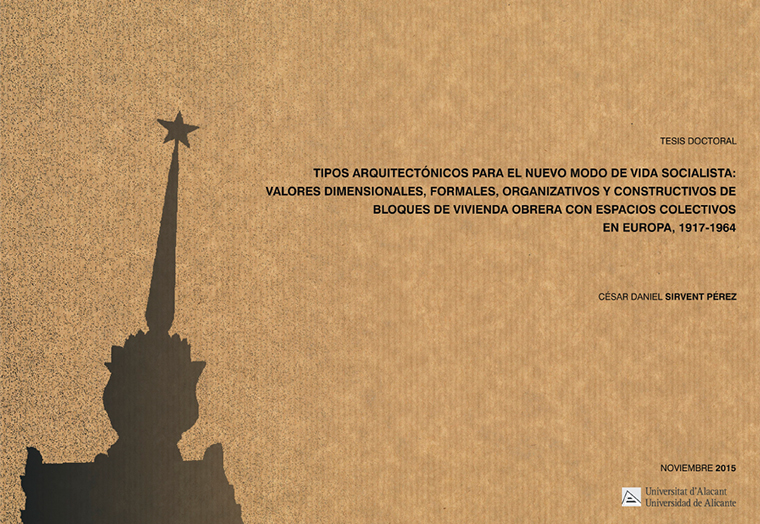The house-commune (дом-коммуна) is an architectural model that was created "ex novo" after the October Revolution in Russia (1917), with the intention to change the habits of the population and to create a "new socialist way of life", based on collectivization. Before the first proposals were built during the decade of the 20s (as a result of a competition, and also due to detailed studies made by a group of Russian architects headed by M. Ginzburg), it is possible to trace the origin of this architectural type in the utopian project by Ch . Fourier, which inspired JB Godin to create his Familistery in Guise, France (1859-1883), one of the first examples ever built. However, the origin of this typological model can also be found on the first hotels in Manhattan skyscrapers in the early twentieth century, as K. Teige notes in his influential book written in 1932, Nejmensi byt (minimum housing), proving that the model of basic housing with integrated communal services is not unique to Soviet or socialist countries; it is also possible to find in capitalist regions.
This research analyzes the evolution of the architectural type "working-class housing with collective spaces" through the detailed study of dimensional, formal, organizational and constructive values of a total of 30+14 representative study cases, located either in liberal capitalist countries, or states based in socialist planned economies, and belonging to different stages of development. The built examples, which have been selected through bibliographic research, or found "in situ" in the course of a series of trips, are organized according to a Cartesian scheme based on two axes: space and time. Regarding the first factor, spatial location, the study focuses mainly in continental Europe, although splitted in two areas, as a result of dividing this land by a vertical axis at its center: the Iron Curtain. About the second parameter, temporal scope, four chronological strata have been studied, corresponding to different stages of development and evolution of the architectural type: background, 1850-1916 (first social experiments); origin, 1917-1933 (definition of the Soviet house-commune model, and capitalist minimum housing); evolution, from 1945 to 1964 (postwar reconstruction); and adaptation, 1965-1975 (prefabrication vs customization, and export to other latitudes). Finally, a comparative study of values (20 charts) has been conducted with the purpose of extracting objective conclusions. Also a final section describing the current state of the buildings has been included; this allows assessing the validity or failure of these proposals that aimed to change (in a behaviourist way) the lifestyles of its inhabitants.





